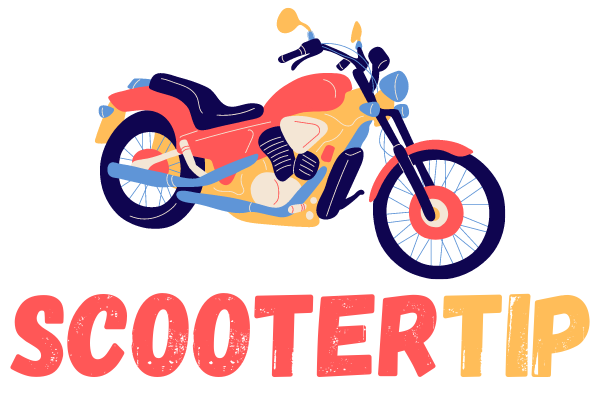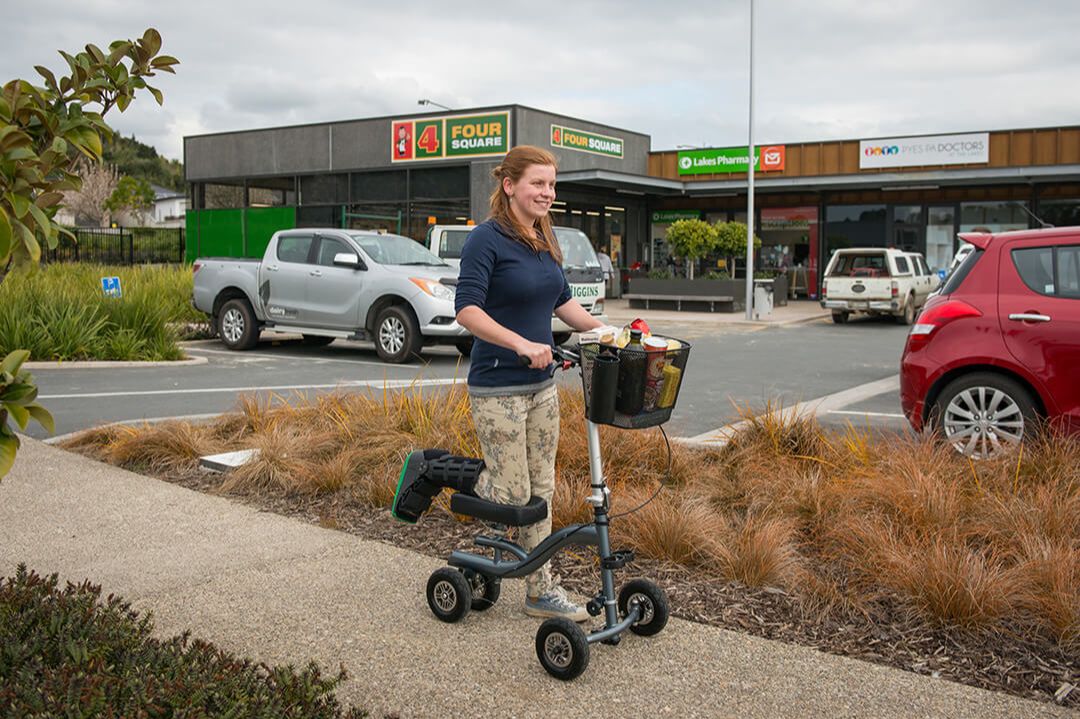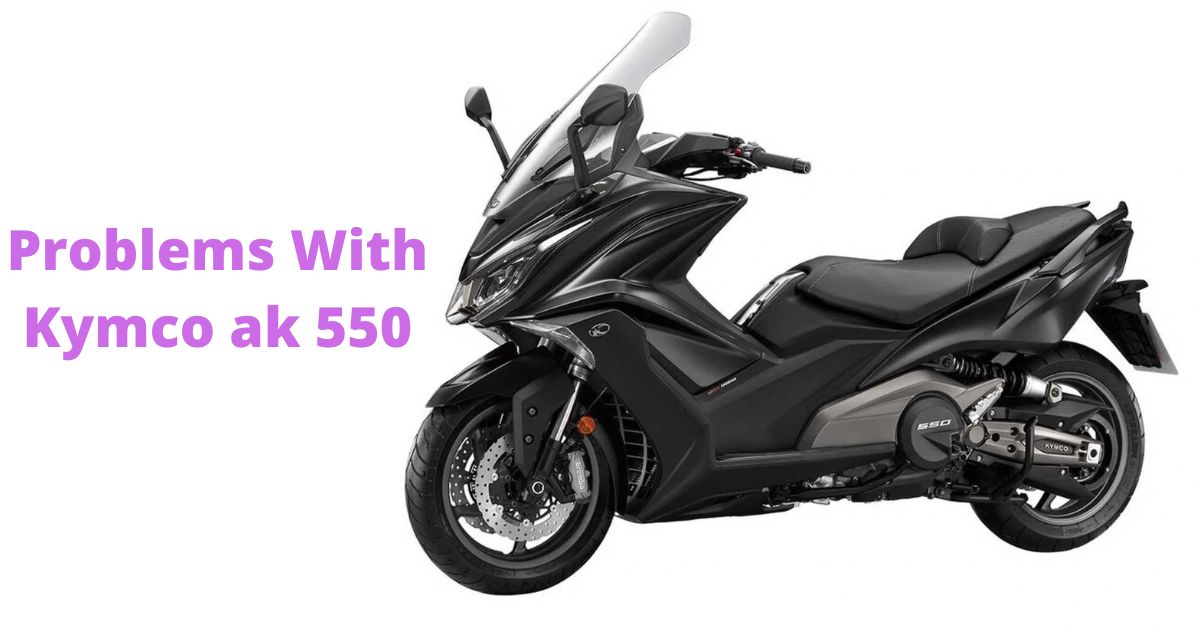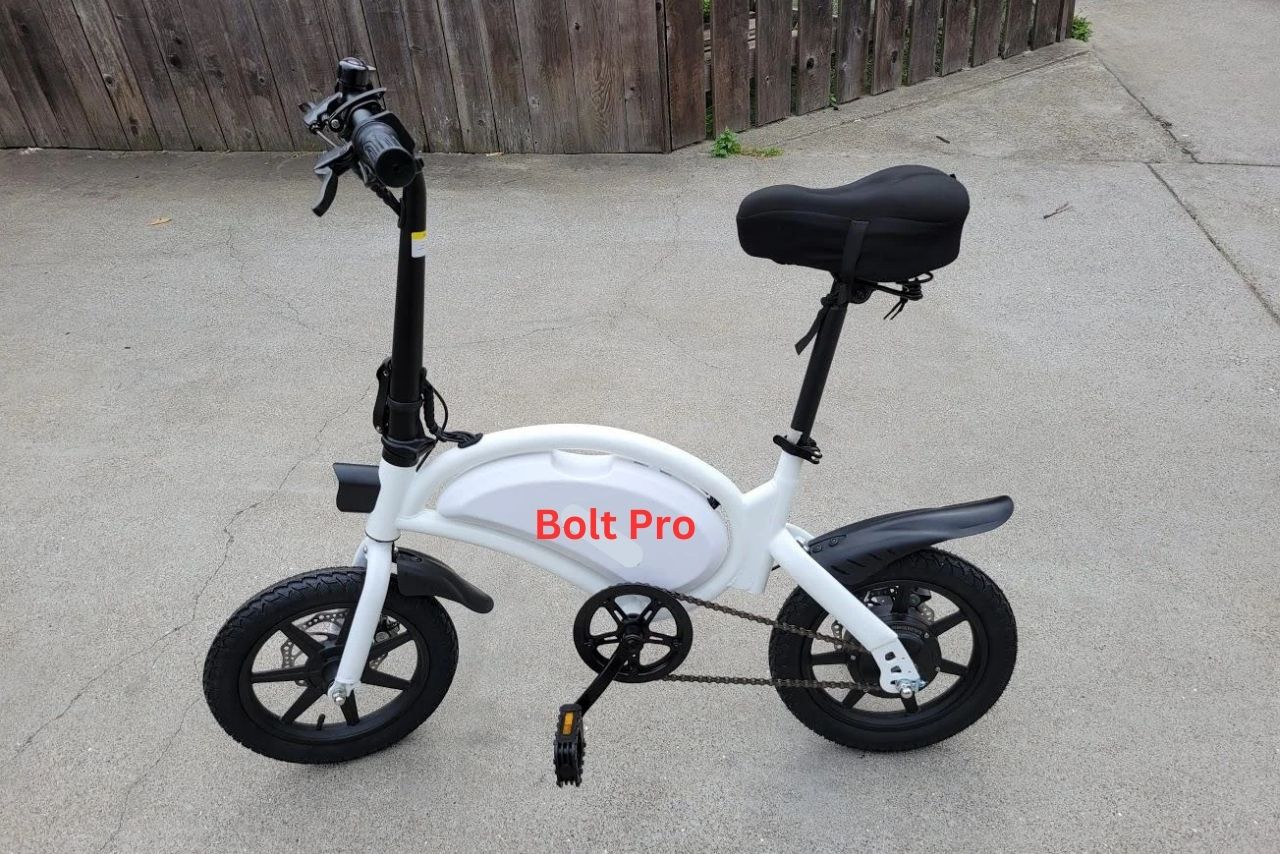If you have an injury to your foot or ankle, a knee scooter can help you move around with ease.
It is a medical device that provides an alternative to traditional crutches, which can cause discomfort and fatigue. However, using a knee scooter for the first time can be intimidating.
In this blog post, we will guide you on how to use a knee scooter effectively, so you can recover from your injury and get back to your daily routine. So How To Use A Knee Scooter?
A knee scooter is a mobility device that can aid individuals with foot or ankle injuries. To use it effectively, first, adjust the height of the handlebars to your comfort level.
Place your injured leg on the knee pad and use the good foot to propel yourself forward. Always keep your injured foot elevated to reduce swelling.
When turning, use your good foot to steer the scooter. Avoid uneven surfaces, and always wear a helmet for safety.
With these tips, you can effectively use a knee scooter and move around with ease while recovering from an injury.
A Knee Scooter
A knee scooter, also known as a knee walker, is a mobility device that aids individuals who are recovering from leg or foot injuries.
It is designed for individuals who cannot bear weight on one or both legs and cannot use crutches.
The knee scooter is a three or four-wheeled device that has a padded platform to rest the injured leg and handlebars to control the movement.
It has a steering mechanism that allows the user to maneuver the scooter easily.
The knee scooter is an alternative to crutches and provides more stability and comfort, allowing the user to move around more easily while keeping their injured leg off the ground.
They are suitable for both indoor and outdoor use and can be rented or purchased.
What Is A Knee Scooter Used For?
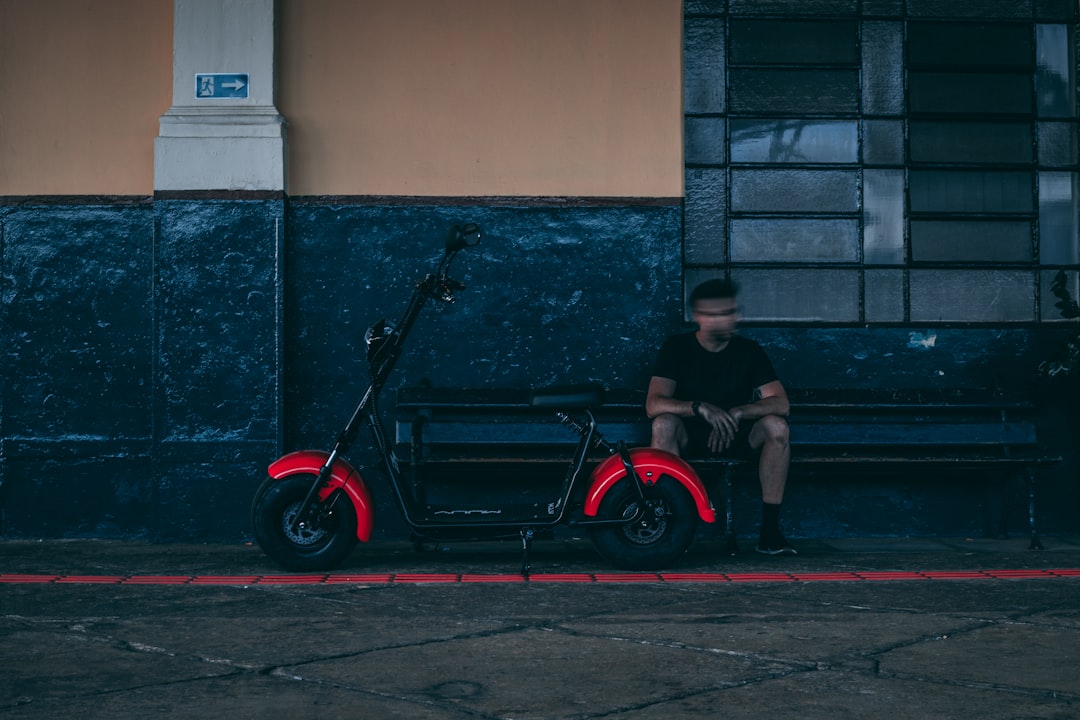
A knee scooter is primarily used by individuals recovering from foot or ankle injuries. It provides a comfortable and stable platform for the injured leg, allowing the user to move around without putting weight on it.
Knee scooters are also used by individuals with chronic conditions such as arthritis or multiple sclerosis, who have difficulty walking long distances due to pain or fatigue.
They are suitable for both indoor and outdoor use and can be used in various settings such as homes, offices, shopping centers, and parks.
Overall, a knee scooter is an excellent mobility aid that can help individuals regain their independence and quality of life while recovering from an injury or managing a chronic condition.
Is It Hard To Use A Knee Scooter?
Using a knee scooter for the first time may seem challenging, but with some practice, it can become second nature.
Adjusting the height of the handlebars to your comfort level is essential for proper control and balance.
It’s also crucial to keep your injured foot elevated at all times to reduce swelling and promote healing. When turning, use your good foot to steer the scooter smoothly.
Avoid uneven surfaces and always wear a helmet for safety.
How To Use A Knee Scooter?
Adjusting the height of the knee pad is also crucial for comfort and stability. Make sure it is at a comfortable height and does not cause any strain on your knee or leg.
When using a knee scooter, always keep both hands on the handlebars for balance and control. Remember to take breaks when necessary and not to overexert yourself.
If you experience any pain or discomfort while using the knee scooter, stop immediately and seek medical attention.
With these simple tips in mind, you can use a knee scooter with ease and recover from your injury quickly. Here are simple steps to use a knee scooter properly:
1. Adjusting The Height Of The Knee Rest
Before using the knee scooter, it’s essential to adjust it to your height. The handlebars should be at the same level as your waist, and the knee pad should be at the same height as your injured leg.
- Loosen The Locking Mechanism
- Adjust The Handlebars To Your Waist Level
- Adjust The Knee Pad To The Same Height As Your Injured Leg
- Tighten The Locking Mechanism
2. Getting On And Off The Knee Scooter
Getting on and off a knee scooter may seem challenging, but it’s quite easy. Follow these steps:
- Stand Close To The Knee Scooter
- Position Your Injured Leg On The Knee Pad
- Hold Onto The Handlebars
- Push Yourself Forward Using Your Good Leg
- To Get Off, Reverse The Process.
3. Moving With The Knee Scooter
Moving around with a knee scooter may take some practice, but it’s easy once you get the hang of it. Follow these steps:
- Place Your Injured Leg On The Knee Pad
- Push Yourself Forward Using Your Good Leg
- Steer The Knee Scooter Using The Handlebars
- To Stop, Use Your Good Foot To Apply The Brakes.
Follow Basic Safety Tips
Remember to always wear a helmet and avoid uneven surfaces when using a knee scooter. It’s also important to take breaks when necessary and not overexert yourself.
If you experience any pain or discomfort while using the knee scooter, stop immediately and seek medical attention.
Using a knee scooter can provide more comfort and stability than traditional crutches, allowing individuals to move around with ease while recovering from an injury or managing a chronic condition.
Knee Scooter Tricks:
Here are 5 Knee Scooter Tricks to make your recovery easier:
- 1. Master the turns: Practice turning your knee scooter in small spaces to get comfortable with the maneuver.
- 2. Keep your balance: Always keep your center of gravity over the scooter to prevent falls. Use your good foot to stabilize yourself when necessary.
- 3. Elevate your leg: Use a pillow or cushion to elevate your injured leg while on the scooter. This will help reduce swelling and discomfort.
- 4. Customize your scooter: Add accessories such as a cup holder, basket or phone holder to your knee scooter to make it more convenient for daily use.
- 5. Take it slow: Don’t rush! Take your time and move at a comfortable pace. Remember, the goal is to heal and recover properly.
How To Walk With Your Knee Scooter?
To walk with a knee scooter, place your injured leg onto the knee pad and push yourself forward using your good leg.
Steer the scooter using the handlebars and use your good foot to apply the brakes when stopping. Take breaks when necessary and avoid overexerting yourself.
It’s also important to follow basic safety tips such as wearing a helmet and avoiding uneven surfaces.
By adjusting the height of the knee pad, getting on and off properly, and following basic safety tips, you can easily use a knee scooter with comfort and stability.
The Advantages Of A Knee Scooter
1. Improved mobility: A knee scooter allows individuals with a foot or ankle injury to move around with ease and independence.
2. Reduced pain: Unlike crutches, which put pressure on the arms and shoulders, knee scooters distribute weight evenly on the knee and leg, reducing pain and discomfort.
3. Increased safety: Knee scooters offer greater stability and balance compared to crutches, reducing the risk of falls and further injury.
4. Convenience: A knee scooter is easy to use, requires minimal effort to move around, and can be easily transported in a car or public transportation.
5. Better healing: Using a knee scooter can help support the healing process by reducing the pressure and strain on the injured foot or ankle, allowing it to rest and heal properly.
How To Turn Your Knee Scooter?
To turn your knee scooter, gently push down on the handlebar on the side of the direction you want to turn.
For example, if you want to turn left, push down on the left handlebar while keeping the right handlebar steady.
This will cause the front wheels to turn and steer in the desired direction.
Remember to take turns slowly and cautiously, especially when navigating tight spaces or crowded areas.
Watch Video:
Who Should Not Use A Knee Scooter?
However, not everyone is a good candidate for using a knee scooter. Individuals who have injuries or conditions that affect both legs may find it challenging to balance on a knee scooter.
Additionally, those with certain medical conditions such as severe arthritis or neuropathy may experience pain or discomfort while using a knee scooter.
It’s important to consult with a healthcare professional before using a knee scooter to ensure that it’s safe and appropriate for your specific condition.
Conclusion: How To Use A Knee Scooter?
Using a knee scooter can greatly benefit individuals with foot or ankle injuries by providing them with improved mobility, reduced pain, increased safety, and support for healing.
By following the simple instructions provided in this guide, users can easily and confidently use a knee scooter.
It’s important to remember to take necessary safety precautions such as wearing a helmet and avoiding uneven surfaces.
Additionally, if you experience any pain or discomfort while using the knee scooter, it’s best to stop immediately and seek medical attention.
Overall, with its ease of use and convenience, a knee scooter is an excellent alternative to traditional crutches for those looking to regain their independence and mobility while recovering from an injury or managing a chronic condition.
FAQs
How do I adjust the height of the knee pad on my knee scooter?
Most knee scooters have a lever or button that allows you to easily adjust the height of the knee pad to a comfortable level.
Can I use a knee scooter outdoors?
Yes, knee scooters are designed for both indoor and outdoor use. However, be sure to avoid rough or uneven terrain that may cause the scooter to tip over.
How do I stop my knee scooter?
Most knee scooters have brakes that can be activated by pushing down on the handlebars with your good foot. Be sure to test the brakes before using the scooter.
Can I carry items while using a knee scooter?
Yes, most knee scooters have a basket or storage area where you can carry small items. However, be sure not to overload the scooter as this may affect its stability.
How do I get on and off my knee scooter safely?
To get on, place your injured leg onto the knee pad and use your good leg to push yourself forward.
To get off, reverse the process by using your good leg to step down onto the ground and slowly lift your injured leg off the knee pad.
Make sure to use caution and take your time to avoid falls or injuries.
